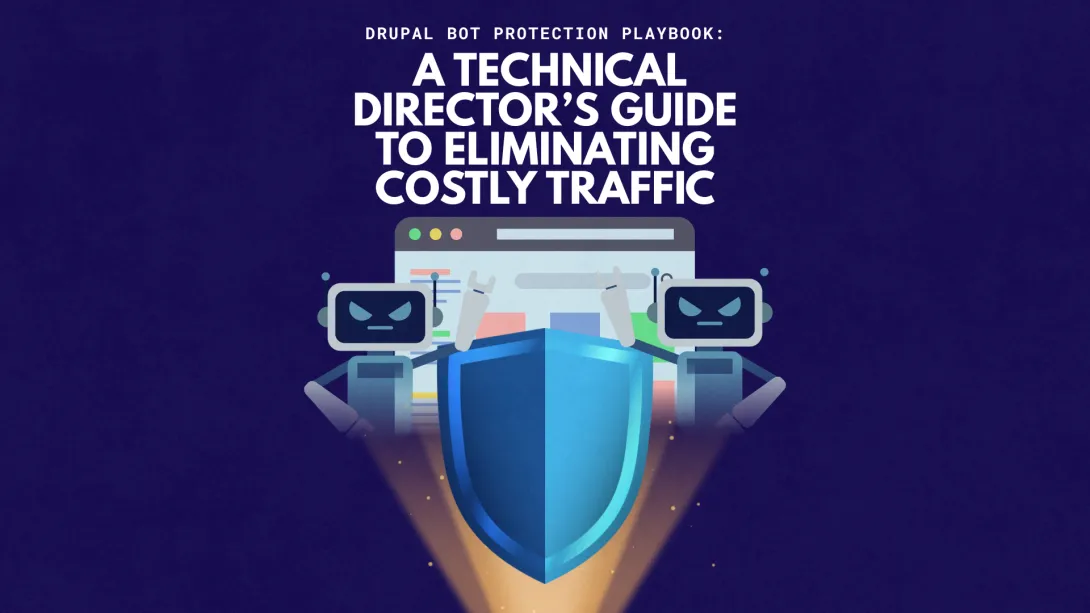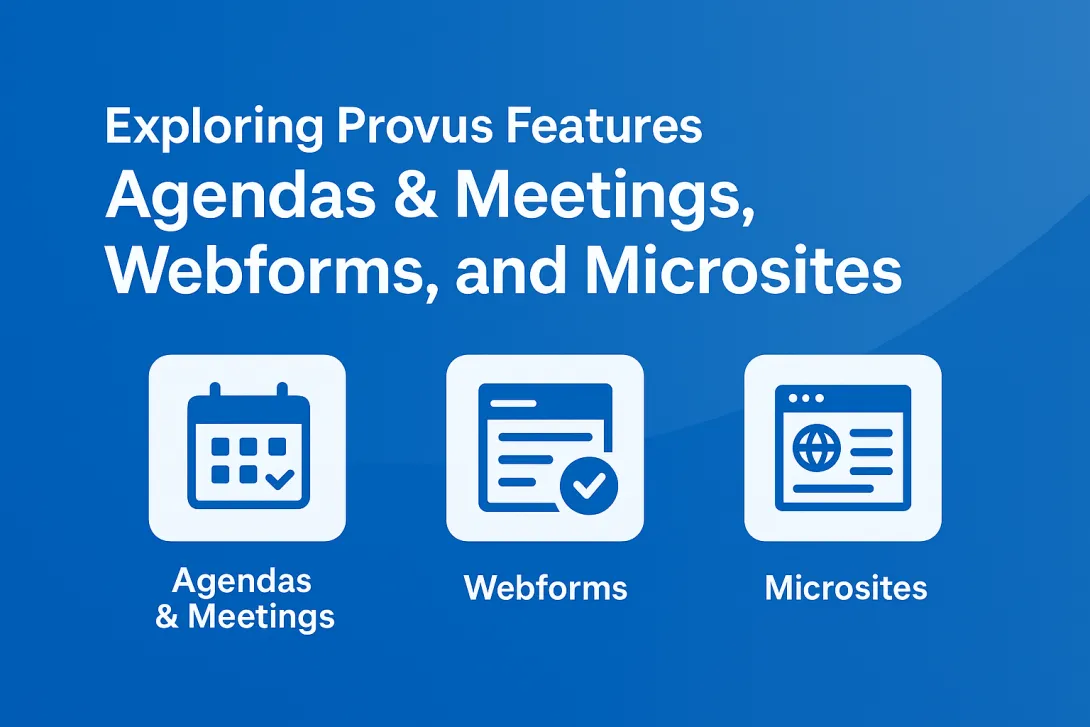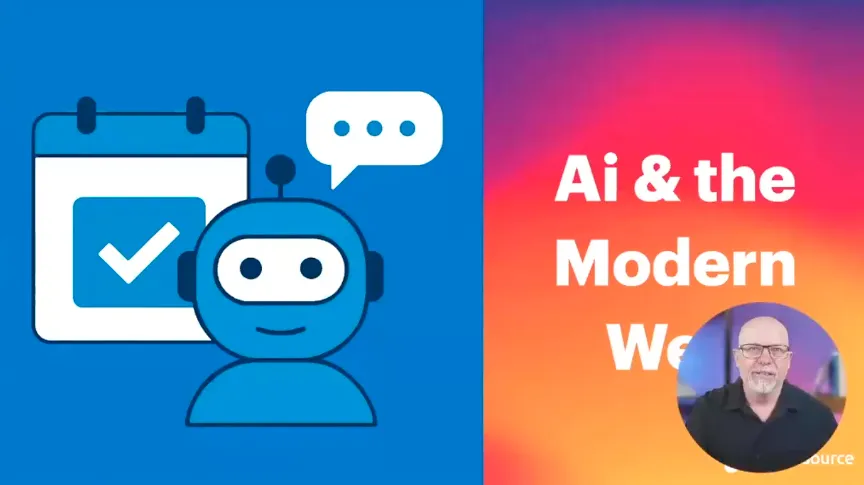Bot Traffic Is Costing Your Drupal Site—Here’s Why

Table of Contents
Takeaway: If your Acquia dashboard says you're at 90% quota—but your analytics show no spike—you're likely paying real tax dollars for fake traffic. Sophisticated bots are increasingly inflating monthly Views and Visits totals on Drupal sites, triggering overage fees and putting state & local government and higher ed budgets under strain.
Even with Acquia's robust bot filtering, modern bots can still count toward your quota at the infrastructure level.
For public sector teams, this means your carefully allocated budgets might be partially spent on fake traffic—traffic your analytics can't see, but your billing system does.
This is especially relevant for high-traffic features like search pages and public directories, where automated crawling is common and can quickly consume your Views and Visits entitlements.
Want to stop the drain?

Download the Drupal Bot Protection Playbook
Understanding your real traffic vs. Acquia's billing
Acquia's usage-based billing measures two key metrics that directly impact your monthly costs:
- Views: Any request that makes your Drupal application process something
- Visits: Multiple Views from the same source within an hour
While Acquia gives you 30% headroom before overage fees apply, bot traffic can silently push you past that threshold, especially during seasonal spikes.
And once you cross it, you’re likely facing a tough choice: Upgrade your contract early or pay one-time overage fees you didn’t plan for.
The analytics vs. billing mismatch
What if your Google Analytics shows reasonable traffic patterns, but your Acquia billing reports much higher usage?
- Analytics tools track client-side events (JavaScript execution, cookies)
- Acquia tracks server-side requests (including those from bots that don’t run JS)
Bots that hit your backend but never execute scripts still count against your quota—but don’t show up in analytics.
Traffic types that drive costs but remain invisible to analytics include:
- Requests that bootstrap Drupal, including private file access
- API calls from decoupled applications and mobile apps
- Security scanners and monitoring tools
- Sophisticated bots that effectively mimic human behavior
This creates two big problems:
- How do you justify increasing your subscription tier when analytics show flat user growth?
- How do you handle bot traffic hammering faceted search pages or course catalogs?
Top Drupal features that attract unexpected traffic spikes
Certain features designed to serve citizens can unintentionally become hotspots for malicious bot traffic. Here are the patterns we're seeing most often:
Search pages and faceted navigation
Your site’s search functionality—especially faceted search for public records or course catalogs—creates vulnerabilities:
- Complex queries trigger billable Views even when cached
- Bots can systematically crawl every filter combination
- Each unique facet URL becomes a potential bot target
- Heavy automation during peak periods (like course registration)
Even Acquia warns that bots don’t always respect nofollow or noindex tags—leading to performance issues, downtime, and higher infrastructure costs.
Open APIs and public data endpoints
Government agencies and higher education institutions need to make data publicly accessible while managing the resources required to serve it. Common high-traffic endpoints include:
- Public records search APIs
- Course catalog systems
- Staff and faculty directories
- Document management systems
Each of these endpoints requires Drupal to process the request, triggering billable Views. Without proper edge protection, automated scrapers can rapidly consume your monthly quota.
In The Economic Impact of API and Bot Attacks report, this automated API abuse cost organizations up to $17.9 billion in losses annually. Add to that the average global annual losses caused by bots, and the number rises up to $186 billion.
Common Drupal site patterns
Even standard Drupal configurations can multiply your bot-driven costs:
- Private file systems: Each secure document access forces Drupal processing
- Views with exposed filters: Creates endless crawlable combinations for public records
- Migration endpoints: Can remain accessible after content transfers
- Legacy redirects: Each redirect counts as a billable request
These patterns are often necessary for government and education sites—you can't simply turn them off. But without proper protection at the edge, they can create a perfect storm of unnecessary Views that become budget liabilities.
Why WAF at the edge is the only real fix for Acquia-hosted Drupal sites
Application-layer defenses—like IP blocks, .htaccess rules, or bot-blocker modules—are not enough. In fact, blocking IPs or User Agents at the application layer is not scalable and is mostly ineffective against preventing requests from being included in your subscription's Views & Visits counts.
The solution is edge-layer protection—stopping bots before they ever touch your Acquia infrastructure.
A Web Application Firewall (WAF) like Cloudflare provides:
- Cost Control: Block non-human traffic before it counts against your Acquia quota
- Smart Filtering: Keep legitimate users while stopping automated abuse
- Performance Boost: Speed up content delivery for your community
But we know WAF deployment can be complex. Many WAF solutions require complex setup, significant maintenance overhead, and risk of downtime during deployment.
That's why we've developed a turnkey Cloudflare implementation specifically for government and education Drupal sites.
Our turnkey solution, built on Cloudflare’s global CDN, delivers:
- Full protection in just one business day
- Zero downtime during implementation
- Immediate reduction in bot-driven Views
- Ongoing optimization without taxing your team
Don’t wait for your next overage notice
Download your Drupal Bot Protection Playbook to get:
- Step-by-step implementation timeline
- Learn how public-sector peers are protecting their budgets
- Best practices for ongoing bot management
Or contact us for a free Bot Traffic Assessment—we’ll review your Acquia usage patterns and identify savings opportunities.
Get our newsletter
Get weekly Drupal and AI technology advancement news, pro tips, ideas, insights, and more.




